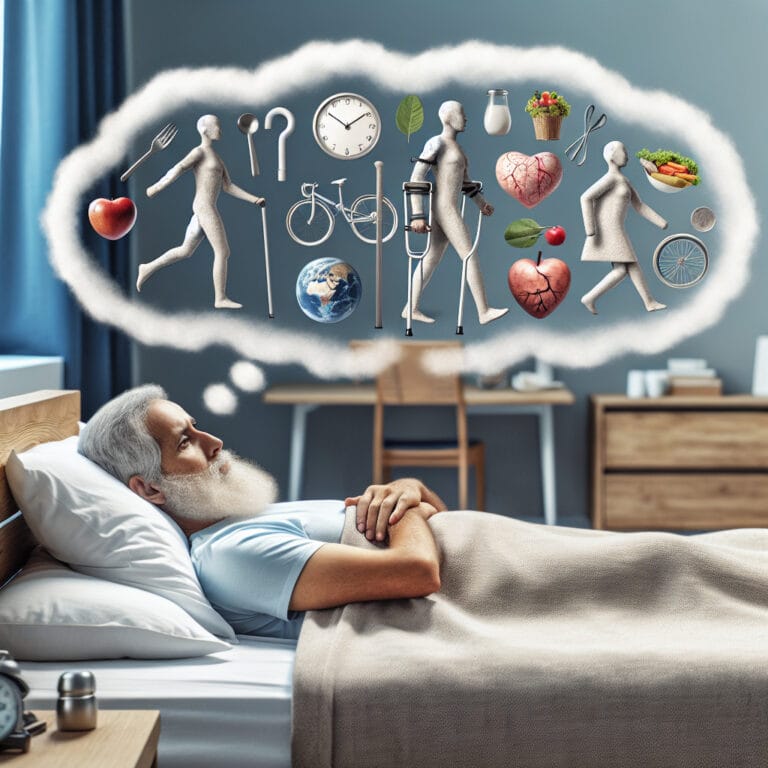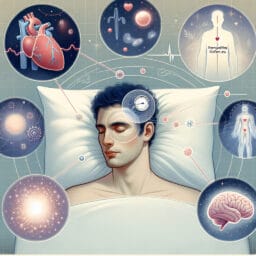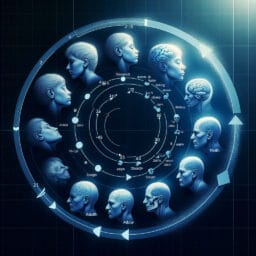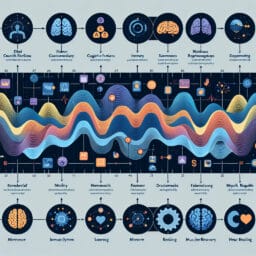
Unveiling the Mystery: What Does ‘Define Sleep Phase’ Mean?
Table of Contents
- Introduction
- The Science Behind Sleep Phase
- Factors Affecting Sleep Phase
- How to Identify Your Sleep Phase
- Conclusion
- Frequently Asked Questions
Introduction
A sleep phase is a distinct part of the sleep cycle, encompassing periods of non-REM (NREM) sleep and REM (rapid-eye movement) sleep. Each stage of these phases plays a vital role in maintaining good health. The NREM phase includes deep sleep stages that help rejuvenate your body and mind. On the other hand, the REM stage, also known as ‘dreaming’ phase, contributes to mood regulation and memory consolidation.
Understanding these distinct phases can have profound implications for your well-being and quality of life. For instance, disruptions or irregularities in your sleep schedule can lead to conditions such as delayed sleep-wake phase disorder or even severe disorders like sleep apnea. Recognizing the importance of maintaining a regular circadian rhythm – our internal clock that influences our sleep-wake cycle – is crucial in achieving good quality restful nights.
Moreover, factors like age significantly affect these cycles; young adults tend to have different patterns compared to older individuals due to changes in their internal biological clocks. Inadequate light exposure during daylight savings time or overuse of electronic devices before bedtime can disrupt this delicate balance further leading to trouble falling asleep.
Maintaining optimal sleeping hygiene involves understanding these elements and their interplay with each other—keeping a detailed sleep diary or undergoing a professional sleep study may aid in recognizing personalized patterns and potential issues within one’s unique rhythm. As such, comprehending how each stage impacts our health reinforces why adequate quality rest is fundamental for overall wellness.
The Science Behind Sleep Phase
Diving into the biology and science of sleep, there exist two primary types: Non-REM (NREM) and REM sleep. The NREM type is further divided into three stages – Light Sleep, True Sleep, and Deep Sleep – each contributing uniquely to our health. Light Sleep serves as a transition phase between wakefulness and deeper sleep stages, during which we can easily be awakened by disturbances in our environment. The subsequent stage, True Sleep, constitutes the majority of our sleep cycle where essential healing processes occur, rejuvenating the body for the next day’s activities.
Deep Sleep or stage NREM sleep is where some truly fascinating biological phenomena take place. It’s during these precious moments that growth hormones are released aiding in cellular repair and regeneration; it’s also when memory consolidation happens. This part of non-rem — deep sleep cycle plays a significant role in energy conservation too; heart rate slows down while blood pressure drops.
Next comes REM (Rapid Eye Movement) or dream phase—arguably one of the most crucial parts of our slumber process from a neurological perspective. Herein lies an intricate dance guided by melatonin onset that stimulates vivid dreams while playing an influential role in mood regulation and long-term memory formation.
The journey from light to deep non-rem sleep then to rem cycle forms one complete rotation through the various stages known as a ‘sleep cycle’. Ideally, this process repeats multiple times throughout our slumber periods ensuring quality rest needed for maintaining good health.
Understanding these cycles becomes even more important considering how age affects them differently across individuals –young adults compared to older ones tend to experience distinctive patterns due largely to changes within their internal clock or circadian rhythm—an element that significantly influences everyone’s unique sleep-wake cycle.
Moreover, many factors including but not limited to daylight savings time adjustments or excessive use of electronic devices just before desired bedtime could disrupt this rhythmic balance leading possibly towards delayed sleep-wake phase disorder or even more severe sleep disorders such as sleep apnea. Thus, maintaining good sleep hygiene becomes paramount for optimizing one’s personal sleep schedule and ensuring quality rest.
| Sleep Phase | Description | Function |
|---|---|---|
| Light Sleep (NREM) | Transition phase between wakefulness and deeper sleep stages. It’s easy to be awakened during this stage. | Serves as a transition to deeper sleep stages. |
| True Sleep (NREM) | Constitutes the majority of our sleep cycle. | Where essential healing processes occur, rejuvenating the body for the next day’s activities. |
| Deep Sleep (NREM) | Growth hormones are released aiding in cellular repair and regeneration; it’s also when memory consolidation happens. | Plays a significant role in energy conservation, cellular repair, memory consolidation, and body regeneration. |
| REM (Rapid Eye Movement) Sleep | Also known as dream phase, it is guided by melatonin onset that stimulates vivid dreams. | Plays an influential role in mood regulation, vivid dreaming, and long-term memory formation. |
Factors Affecting Sleep Phase
The interplay between age, lifestyle choices, and existing health conditions greatly influences our sleep cycles in ways we may not fully realize. With advancing years, it’s common for our internal clock or circicadian rhythm to alter the architecture of our sleep stages. This is often why older adults might experience a shift in their sleep schedule, waking up earlier or having trouble falling asleep at night compared to their younger counterparts. Additionally, lifestyle habits such as overexposure to electronic devices before the desired bedtime can significantly affect not just the quality of our sleep but also its phases. The blue light emitted by these gadgets can delay melatonin onset – a crucial hormone regulating our REM cycle that further impacts overall mood and memory consolidation. Health conditions like sleep apnea could pose an even bigger threat to maintaining a healthy non-rem — rem balance during slumber. This disorder interrupts your restful night, frequently jolting you from deep NREM sleep into wakefulness and thus disrupting your entire rhythm adversely affecting both physical and mental well-being. It’s worth noting that ensuring good health isn’t just about diet and exercise; acknowledging the role of adequate quality sleep is equally paramount in this equation.
| Factors | Effects on Sleep Phase |
|---|---|
| Age | Advancing years may alter our internal clock or circadian rhythm, changing the architecture of our sleep stages and possibly causing shifts in sleep schedules. |
| Lifestyle Choices | Overexposure to electronic devices before bedtime can significantly affect sleep quality and phases. The blue light emitted by these gadgets can delay the onset of melatonin, a hormone crucial for regulating the REM cycle. |
| Existing Health Conditions | Conditions like sleep apnea can disrupt a healthy non-rem — rem balance during sleep by frequently interrupting deep NREM sleep, thus adversely affecting both physical and mental well-being. |
How to Identify Your Sleep Phase
Delving into the realm of sleep medicine, tools like sleep studies and tracking devices have revolutionized our comprehension of personal sleep phases. These advanced methodologies can provide invaluable insights into your distinct non-rem and rem cycle, identifying patterns that might not be apparent to the naked eye. Ever wondered why you feel tired even after a full night’s rest or why staying awake past your usual bedtime results in grogginess the next day? The answers may lie in understanding your unique sleep stages. As we traverse through light sleep to deep nrem stage, each transition intricately impacts our overall health. Sleep studies capture these transitions, offering a detailed analysis of one’s individual rhythm. Moreover, maintaining a comprehensive sleep diary can significantly influence one’s understanding of their internal clock and circadian rhythm—factors greatly affected by age and lifestyle choices.
Recognizing these patterns could be instrumental in resolving common issues such as trouble falling asleep or delayed sleep-wake phase disorder—a condition often seen among ‘night owls’. Awareness about when melatonin onset occurs within your cycle will help optimize light exposure during daylight savings time, reducing potentially disruptive changes to your schedule. Ultimately, comprehending how various factors shape our unique course through different stages – from being awake to entering REM stage – proves pivotal for maintaining good health and achieving quality restful nights.
Conclusion
Understanding your personal sleep phases is a significant part of maintaining optimal health. As we navigate through life, age affects our internal clock and circadian rhythm leading to changes in our sleep schedule. Observing and analyzing these shifts can provide valuable insights into conditions such as delayed sleep-wake phase disorder or more severe sleep disorders like sleep apnea. Tools from the realm of sleep medicine, like a detailed sleep diary or comprehensive sleep study, can help identify individual patterns within the non-rem and rem cycle. This knowledge allows for the optimization of quality sleep by adapting lifestyle choices such as controlling light exposure from electronic devices near desired bedtime or adjusting routines during daylight savings time. Moreover, it’s vital to understand how each stage—from light NREM stage to deep REM stage—impacts overall well-being. So remember, good health isn’t merely about diet and exercise; it’s also about comprehending the importance of adequate quality rest through understanding your unique journey across various stages of sleep cycles.


